The Church of the Flagellation is a Roman Catholic church in the Muslim Quarter of the Old City of Jerusalem. Standing on the Via Dolorosa near St. Stephen’s Gate at the traditional Second Station of the Cross, the site is believed to be the place where the Roman soldiers flogged Jesus after he was convicted and sentenced to death. The church is part of a Franciscan monastery that includes the Church of the Condemnation and Imposition of the Cross.
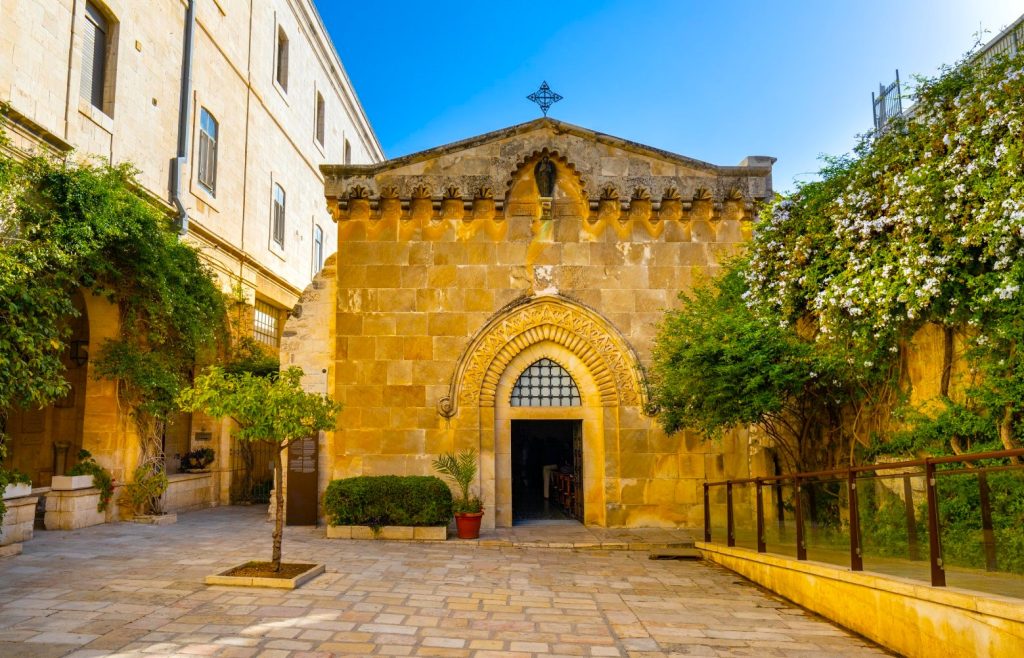
History of the Church of the Flagellation
The Crusaders first built the Church of the Flagellation in the 12th century. The original church and surrounding buildings were used as stables and later as private houses during the Ottoman period. In 1838, Ibrahim Pasha of Egypt gave the entire complex to the Franciscans, and a year later, the church was rebuilt over the medieval ruins by Duke Maximilian Joseph in Bavaria.
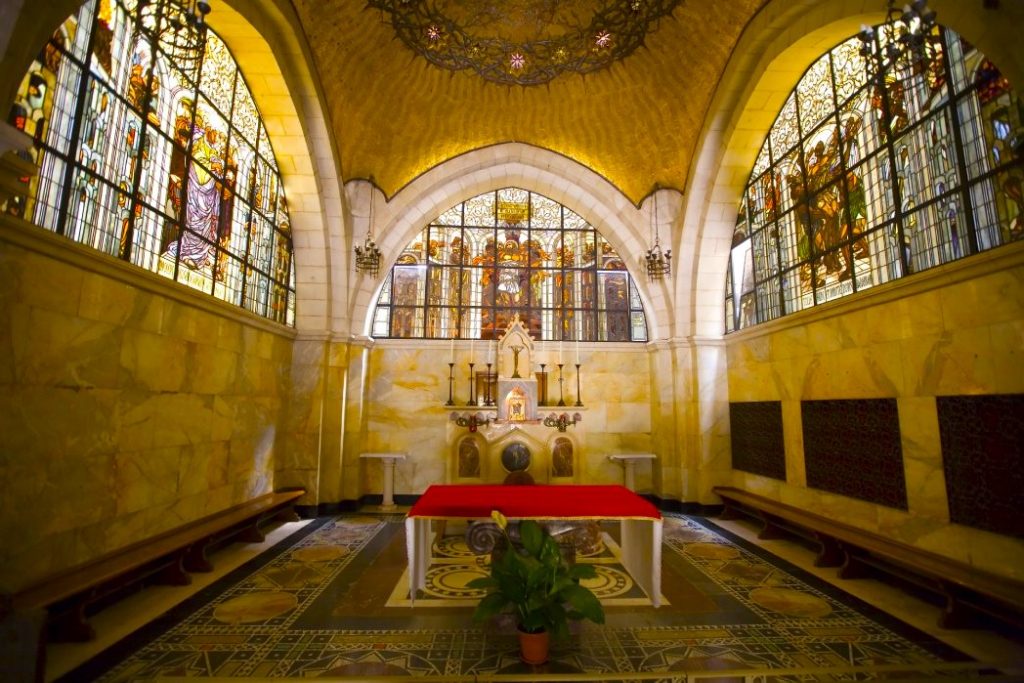
Then the current church was completely reconstructed in 1928–29 by Italian Antonio Barluzzi. He designed the church in the same style as it was built in the 12th century. Today, the Franciscan Custody of the Holy Land holds the church in trust.
The architecture of the Church of the Flagellation
Furthermore, the Church of the Flagellation features a simple design with a single aisle. It has a domelike ceiling with a beautiful mosaic designed as a circular pattern of thorns. Three spectacular stained-glass windows depict different aspects of Pilate’s Biblical narrative of the trial of Jesus.
Christian Tour of Jerusalem
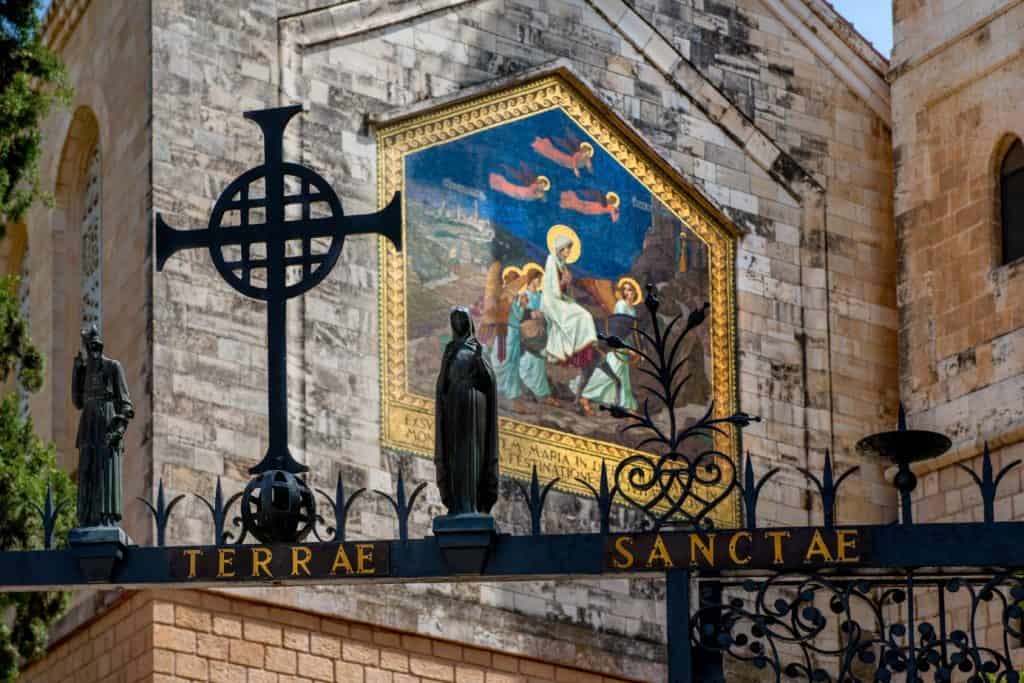
In addition, the northern window of the church depicts Pontius Pilate washing his hands, and the southern one, the victory of Barabbas. The central stained-glass window behind the altar depicts the Flagellation.
Monastery of the Flagellation
Also, the Church of the Flagellation is one of three buildings that make up the Monastery of the Flagellation. The other two buildings in the monastery are the Church of the Condemnation and the Terra Sancta Museum.
The Monastery of the Flagellation is located near the Praetorium. In other words, where Jesus was imprisoned, mocked, and crowned with thorns. In addition, Pontius Pilate’s famous ‘Ecce Homo’ speech is also believed to have taken place in the area where the Church of Ecce Homo and the Convent of the Sisters of Zion now stand.
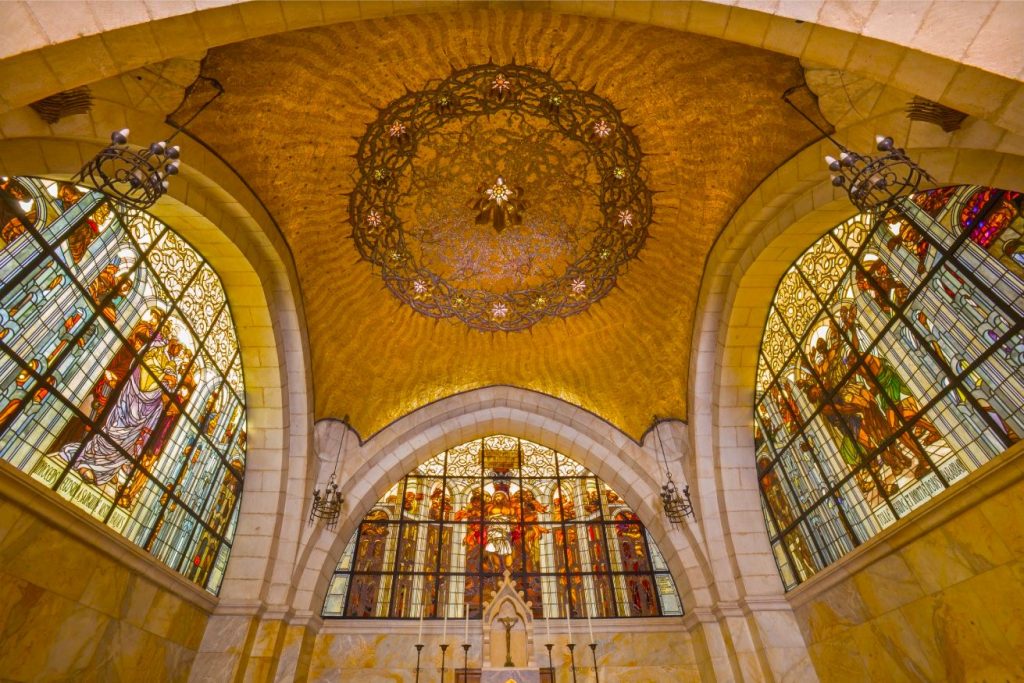
German architect Wendelin Hinterkeuser built the Church of the Condemnation in 1904. The church rests atop the ruins of a medieval chapel and is topped with five white domes, each containing stained glass windows. The church boasts beautiful original Roman floors, with one slab bearing the marks of an ancient game played by soldiers.
Terra Sancta Museum
The third part of the complex is the Terra Sancta Museum. The museum chronicles the artistic, historical, and religious history of the Christian faith and the Via Dolorosa. The archaeological and multimedia sections of the Terra Sancta Museum are at the Monastery of the Flagellation.
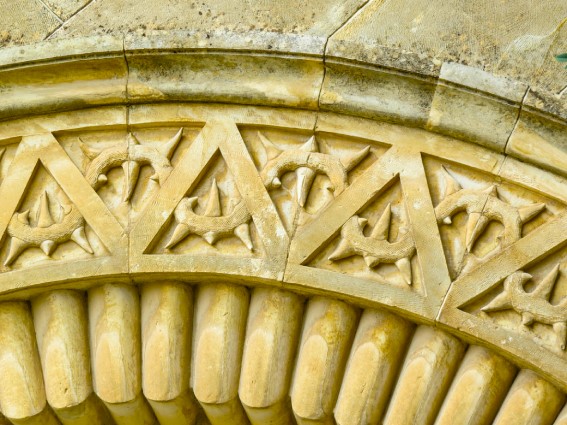
Furthermore, the multimedia section of the Terra Sancta Museum covers 2,000 years of history in Jerusalem through digital animation and narration. The archaeological section, which opened in June 2018, displays objects discovered in places mentioned in the Gospels.
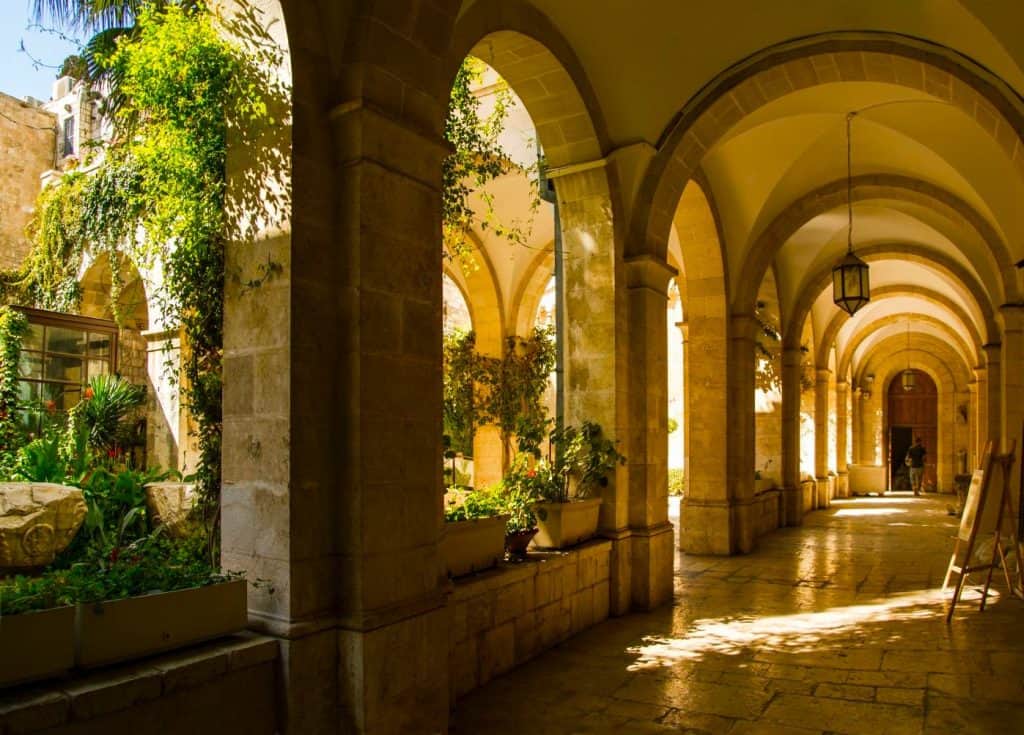
The historical section of the museum at St. Saviour Monastery in the Christian Quarter displays gifts from European royalty to the Holy Land.







